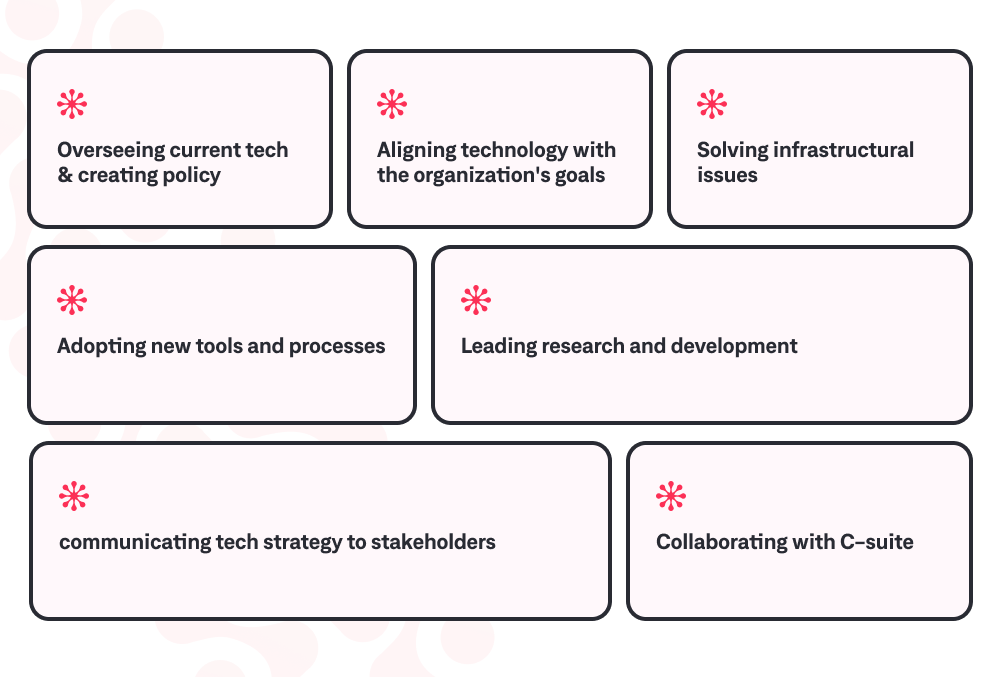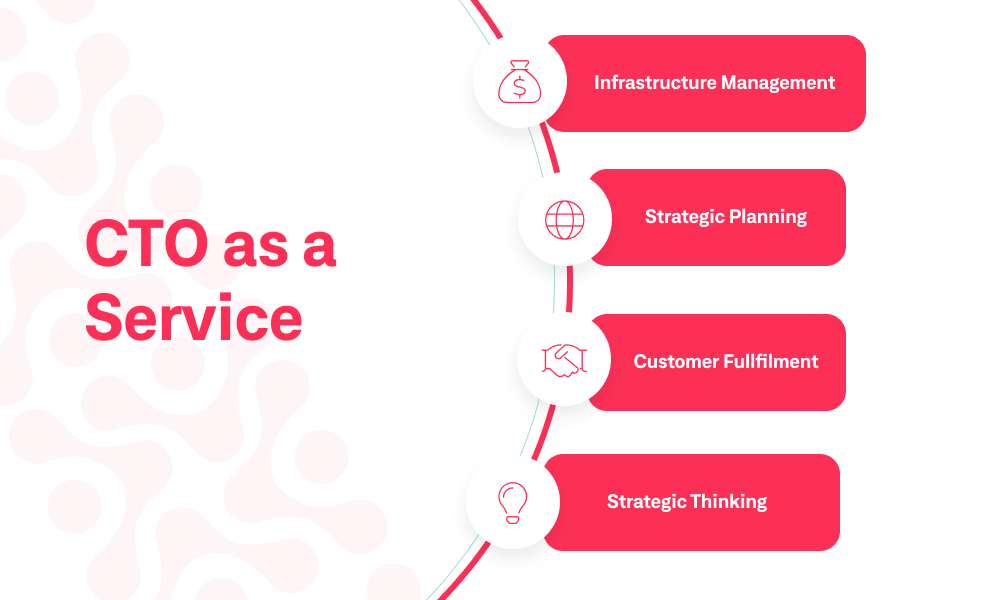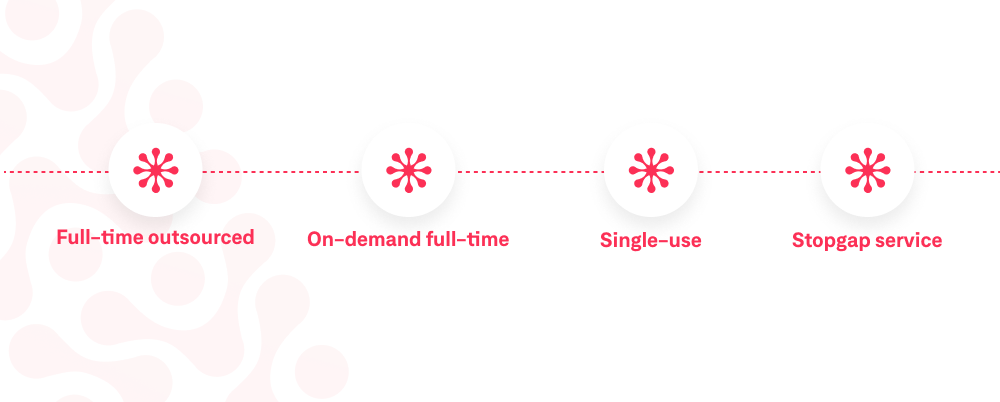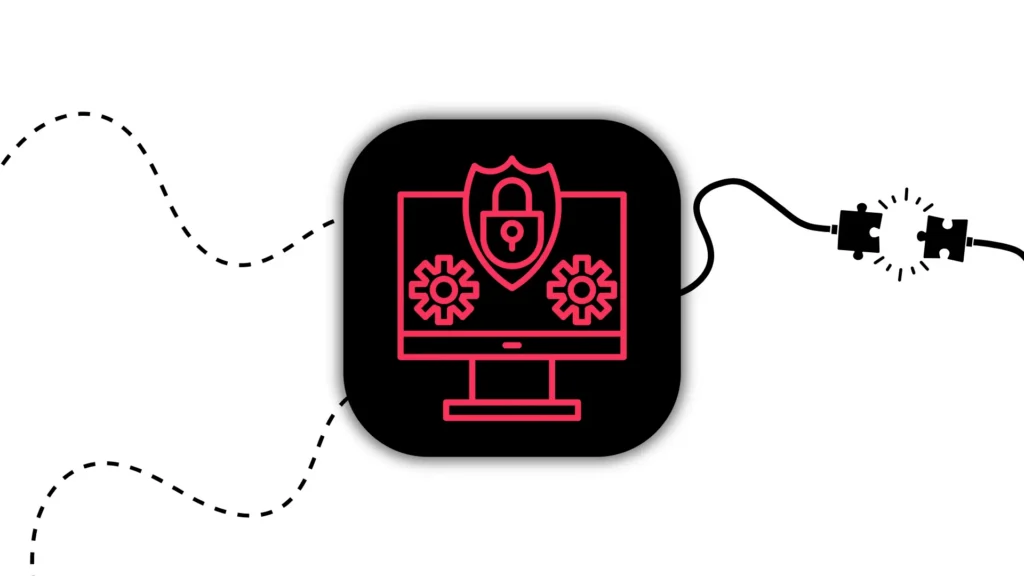Learning and innovation go hand in hand. The arrogance of success is to think that what you did yesterday will be sufficient for tomorrow.
William Pollard
In other words, what got you here won’t get you there. A common phrase that stands ground now more so than ever. With an avalanche of fast-paced advancements, technology has pressured companies to undergo constant changes to stay level with the competition.
Think just a decade back. Agile referred to the ability to move fast and with ease. Nowadays, for most business people, it rings as just one in the sea of emerging trends technology has brought forward. In fact, the data never seizes to feed into the same narrative.
- 90% of the world’s data has been generated in the past 2 years alone (Hubspot)
- 90% of the world’s preeminent companies invest in AI (TCS Reports)
- Digital-first companies are 64% more likely to succeed in achieving their goals (Forbes)
- 85% of small businesses find success in their ventures thanks to technology (Gartner)
Almost 85% of executives believe AI will give them a competitive advantage (BCG Report)

A common ground to all these facts is that companies have realized that technology became a means to an end. A way of filling a market gap swiftly and with precision. Companies that fail to do this are just a mere figure in the myriad of others that go bankrupt due to this “unfilled gap”. Now, the question most companies are trying to find the answer to – and with increased urgency – is: who is truly capable of helping us to exploit emerging technology? Furthermore, is it achievable without hefty expenditures and excessive trial and error? Well, read on.
What is CTO as a Service?
CTO as a service refers to the service or provision of technical and business guidance by an outsourced, third-party Chief Technology Officer. It’s aimed at supporting small and medium-sized enterprises (SMEs) looking to scale their business with expert guidance in technology. In most business applications the service is provided not by an individual, but by the external organization experienced in implementing a comprehensive technology-centered strategy.
Compared to a traditional full-time Chief Technology Officer, CTO as a Service is a more flexible and less capital-absorbing arrangement. Companies, instead of qualifying and bringing on board an individual, request external support. This way they’re able to transfer technical and business responsibilities as they see fit in their ongoing business activities.
What are the roles of the CTO as a Service?

Overseeing current tech advancements & creating policies. Keeping in touch with industry-specific tech trends that may help a company reach its business objectives.
Aligning technology with the organization’s goals. Monitoring technology trends and identifying opportunities and risks involved in achieving organizational goals.
Amending current infrastructural and digital conditions. Researching, outlining, and recommending the most effective tech-related business processes; Approving new designs IT and digital communication systems.
Assessing and adopting new tools and processes. Recommending the most prominent tools to solve specific business issues; Taking into account current budget constraints and advising cost-efficient migration; Helping implement business management, project management, data protection, sustainability, and QA tools.
Consulting and leading research and development. Developing a strategy to lead research and development; Managing IT assets in relation to R&D; Outlining the most efficient systems and practices for R&D
Fostering existing business relationships. Communicating the company’s tech strategy to stakeholders; Assisting with recruitment and retention that may help see digital transformation through.
Collaboration with C-suite. Participating in organizational governance and helping with high-level decision-making.
The multifaceted roles of CTO as a Service
When employing the Chief Technology Officer, aside from expecting technical expertise, companies usually expect a prospect to excel in one or more of the four areas.

When utilizing the CTO as a Service, on the other hand, companies can actually leverage any of the 4 areas that they tend to be missing the most. Rather than being constrained by potential limitations in the CTO’s expertise, they have the opportunity to strategically utilize one or more areas that align most closely with their requirements.
Infrastructure management. Holding responsibility for supervising processes, workflow, networks, and upkeep.
Strategic planning. Figuring out a long-term roadmap and implementing the organization’s technology strategy.
Consumer fulfillment. Delivering tech advancements with a primary concern of fulfilling customer needs and sufficing to target markets.
Strategic thinking. Developing high-level strategies while taking into account multiple business-crucial factors.
In what ways can CTO as a Service be integrated?
The way companies utilize CTO as a Service varies based on their specific needs, financial considerations, and overall intricacies of their business operations. To provide a convenient and flexible approach, organizations can employ external CTO service in four distinct formats:

Full-time outsourced
Engaging a full-time outsourced CTO as a Service offers the benefits of complete collaboration at present-day CTO salaries. When fully outsourcing the service, companies don’t need to worry about grooming their own talent into CTO and can fully use the expertise of an external tech partnership. Despite being remote, this dedicated team of professionals contributes 40 weekly hours to the company.
On-demand full-time
On-demand CTO-as-a-service adheres to predetermined hours. This form of partnership allows businesses to evaluate, request when needed exclusively, and pay for services utilized. This fractional CTO model naturally presents a cost-effective external approach to collaboration.
Single-use service
Should the requirement be for a CTO on a project basis solely, the companies can harness a single use-service. This particular format for CTO as a Service is commonly selected by enterprises seeking support for distinct tasks. When in need of targeted troubleshooting within specialized technical domains or comprehensive audit procedures they can utilize themselves later on, a single-use model proves to be just the right choice.
Temporary stopgap service
A temporary stopgap CTO as a service, otherwise known as an interim CTO, is an option engaged to provide temporary aid in technical and business functions during the company’s search for an in-house CTO.
In the pursuit of a new Chief Technical Officer, the potential exists for operational interruptions and decision-making delays. To mitigate these risks and ensure continuous operational support, the option of engaging a CTO on a temporary basis is viable.
Advantages of Employing CTO as a Service
In today’s market, with rapid-shifting market dynamics, it’s evident that knowing how to handle technology can make or break a company. While only 7% of the world’s companies are able to fully call themselves digital, the data pinpoints that digital-first companies are 64% more likely to reach their business objectives.
For companies on a trajectory to embracing a more digitized approach, starting with basics will constitute a viable strategy. Companies need to understand the status quo without censorship and find the best way to use more effective tools and methods without damaging their company culture and thereby their market competence. This is part of technical strategy, so the CTO in its own right, plays a big role in achieving fruit-bearing levels of digital literacy.
Aside from the above-mentioned roles and responsibilities, CTO services will support efforts in attaining benefits in four of the following areas.

#1 [Tech Strategy] Where Business Strategy Meets Tech Insight
In 1965, Gordon E. Moore, a co-founder of Intel, made a curious observation. Having been around technology long enough, he noticed people got better and better at making tech. As a result of this, he neatly pointed out that the number of transistors on a microchip doubles every 2 years while the cost of computers gets cut in half. Today, we know this golden rule as Moore’s law.
In today’s aftermath, the role of the Chief Technology Officer is to make sure Moore’s law works in the company’s favor. The tech arena is experiencing progress at a rapid-fire pace. Therefore it’s pivotal that CTO observes these technological turning points and thinks over a strategy to better navigate the change.
The story of Bob Iannucci
To illustrate what a day in the life of a CTO should look like, we dug out a story of Bob Iannucci, a former Nokia’s chief technology officer. At a company that gave away the position of the global leader in the phone industry, the resistance to change needed to be minimized. So to rethink Nokia’s lost position and let go of the delusional notion of snatching it back from companies such as Apple or Samsung, a need for reinvention occurred again.
Starting with a consumer fulfillment approach Bob raised a question – how will people use mobile phones differently in the upcoming years? To put it succinctly, the solution was found at the intersection of business strategy and tech insight.
Upon seeing an emerging trend of users that want their phones to act as extended senses, Nokia moved into services and software for mobility. They then crafted a strategy to try and merge the physical and digital worlds into a zero-click approach to search. Instead of reading the model number of Garmin watch, let’s say, to google the reviews, Nokia expected people to want to just point a camera at the watch in the store and let the device do the work for them.
The trend obviously came to life and stuck around. As a consequence a lot of prominent companies – alongside Nokia – utilized it and built the connectivity-centered reality as we know it – think Google, Tesla, Apple, and so forth.
The CTO’s strategic contribution
Through their expert leadership, the CTO services drive transformative advancements in technology at the company level. The CTO as a service, architects and builds a strategy for the creation of solutions that catalyze growth and enhance operational efficiency. The contribution of CTO services transcends technical acumen alone as well. Having the fortune of being on the business outskirts, external CTO services are less prone to appealing to higher-ups and nodding their companies away to slow failure. In turn, companies can expect more honest and effective feedback that sparks a well-needed change.
With an understanding of the modern business landscape, the CTO services offer a tech perspective that serves as a compass in decision-making. They illuminate potential opportunities and risks and use refined methodologies, thus allowing the leadership to make informed and impactful choices. This blend of technical insight and business astuteness empowers companies to confidently navigate the markets, seize emerging trends, and attain a position of long-term profitability.

Let’s talk tech business
Gain a fresh technology perspective, architect your technical landscape, and achieve your business targets through digital innovation.
#2 [Cost-Efficiency] A Budget-Friendly Innovation Partner
In recent years it’s becoming evident that big, forerunning companies – and smaller ones alike – are leaning more towards tech-oriented business management. Rewind the tape just a few decades back and you’ll probably conjure up Mad Men types holding more power in steering companies. And you’d be right. As much as they ruled over media, Don Drapers of the world pretty much made all the difference in the business landscape as well. Examining the data available today, researchers confirmed the declining importance of marketing over time. Turning to a data set gathered from S&P 1500 firms, they found a notable, 35% drop in the number of Chief Marketing Officers. Meanwhile, and straight to the point we’re now making, the number of CTOs in the top five, highest-paid category increased immensely. They now far exceed CMOs both in ways they alter the company’s trajectory and, in the wake of this change, in salary spend. In other words, CTOs are both more important and equally costly today.

Aside from the salary standpoint, the road to grooming an internal CTO is long and uncertain. In a survey conducted by STX Next, 78% of respondents answered that the road to a CTO role took two different roles beforehand and 5 years or more to get there. As much as 42% become CTOs only after 10 years into their careers. Not to mention that incoming CTOs often jump ships to claim their positions.
Moreover, the CTO position is usually more short-lived than other senior management roles. The average tenure of a CTO tends to be less than 4 years, thereby confirming the perplexing nature of the role.
CTO as a service offers a cost-effective and less risky alternative to an in-house CTO. Businesses can access this resource as needed, feeling confident that a proficient and well-equipped team is managing their technical struggles.
CTO responsibilities often involve trial and error. There’s an argument that this change in logic – from CTO to CTO service – poses. It is advantageous to rely on a seasoned company that has honed its skills through years of experience on other projects, rather than risking the company’s success with an internal CTO that is just about to start its trial-and-error journey.
#3 [Scalability] Achieving Operational Excellence
When the enterprise expands the infrastructure should follow. As growth takes place and the company takes quick pivots, the backbone systems should remain adaptable and support sudden shifts. In fact, companies should improve profit margins even when systems are tested under heightened sales volume and growing operational demands.
In 2012, an up-and-coming producer of highly popular free smartphone games, King Digital Entertainment made a splash – notably fueled by the success of Candy Crush Saga. From 2012 to mid-2013, the company secured a 12-fold revenue surge, contrasting with a sixfold rise in costs. As a result, operating income skyrocketed almost 70-fold – all the way from €10.5 million to an impressive €716 million.
On the other hand, SoundCloud, a well-known online audio platform wandered off to a different avenue. Once a matching rival to Spotify and Apple Music, has seen its user base grow as much as 15-fold. They went from 10 million subscribers to 150 million active members. Nevertheless, its earnings saw an uptick of under 50%, rising only from €8 million to €11 million. Whereas its operational expenses spiked by 75%, scaling up from €16.5 million to €28.5 million. Of the two, one established itself as a secure, thriving organization from the get-go while the other struggled to remain in a competitive battle. One’s business model employed economies of scale while exploring a multitude of profitable routes (extrapolation) while the other has undergone difficulties in containing costs due to the inability to develop a scalable way to monetize the giant user base.
How CTO services may help
To steer away from the Sound Cloud scenario, CTO services make sure to:
- Ensure a team possesses suitable skillsets for various scenarios and scalability approaches
- Assess the level of ad-hoc business processes and legacy or silo systems
- Estimate a pace of digital transformation at which company culture will embrace the change
- Integrate efficient processes that incorporate industry best practices
- Systemize data collection for subsequent backend reporting
- Establish seamless, integrated systems to eliminate manual data handling and maintain consistency across various platforms
Forward-thinking CTO services anticipate the future and ensure that scalability strategies, business process enhancements, and infrastructure adjustments can accommodate flexibility. They understand the importance of using best-of-breed methods and practices in order to successfully navigate shifting external dynamics. The worst-case scenario for a transforming company is getting another legacy system just half a decade later.
Furthermore, it falls within the responsibility of the CTO to implement changes with minimal disruption. Although often labeled as something positive, in our experience, people usually respond unfavorably to sudden changes.
#4 [Digital Direction] Leading the Way In Achieving Tech Targets
The Chief Technology Officer’s role has traditionally been to ensure that technology supports existing products. Yet, transformative changes in the tech landscape have propelled CTOs to take on the role of Chief Transformative Officer. A testament to this shift is IBM. Their executives recently shared that over 40 percent of their profits are now coming from products and services that were impossible a mere handful of years back. In this dynamic era, CTOs shouldn’t just manage technology. They should be able to take measures to transform parts of the business while also mitigating risks.
To guide companies through the dynamic tech landscape, CTO services assist in charting a digital trajectory. This blueprint stems from a comprehensive evaluation of the company’s existing technological setting and should remain flexible to future plan revisions. A robust digital roadmap, curated by CTO services, encompasses:
- A tech vision for the company
- Setting clear targets
- The scope and timeline for the foreseeable future
- Appointing launch team and change advocates
- Defining key stakeholders
- Cost of delivery
- Periodical reports on plan execution and roadblocks
- Identification of most probable risks
- Sync checkpoints that invite discussion of key issues and takeaways
- Adopting new operating models
Digital direction is an ongoing assessment process that always communicates emerging topics and whether they were new problems that emerged from the solutions. The goal of CTO services is not to make this another ad-hoc process. Digital direction should illuminate a way of reaching future state operating models while decreasing the magnitude of risk involved with a change at each step of the way.
Hiring Your Own CTO as a Service?
At Net Group, CTO as a Service is one of our modes of partnership with clients. After 20+ years of history in creating innovations, building new business subsidiaries, and acquiring other prosperous businesses we’ve had our fair share of trial and error in equipping businesses for a global tech launch.
And a successful one. From in-house projects and now separate companies in Depowise and Syneral, to established offshore offices, 200+ happy customers, and notable rewards.
If you’re looking for a strategic partner in your team and reasonable value for money, we’d be happy to connect with you.
Similar insights

Smart Workflows: AI Tools and Tips for Busy Leaders
16/12/2025
Supply Chain Attacks: Rethinking Third-Party Trust
10/12/2025
Choosing the Right Tech Stack in Uncertain Times
25/11/2025
How to Pitch and Get Your Ideas Approved at Work
12/11/2025
12 AI Cyberattacks That Made CEOs Very Cautious
21/10/2025
14 Books Smart Tech Leaders Are Reading This Fall
07/10/2025
Protect Your Crown Jewels: The Heart of Your Cybersecurity
15/09/2025
How Renown Business Executives are Using AI?
12/08/2025
Think You’re Secure? PEN Testing Will Tell You
15/05/2025
Let the success
journey begin
Our goal is to help take your organization to new heights of success through innovative digital solutions. Let us work together to turn your dreams into reality.